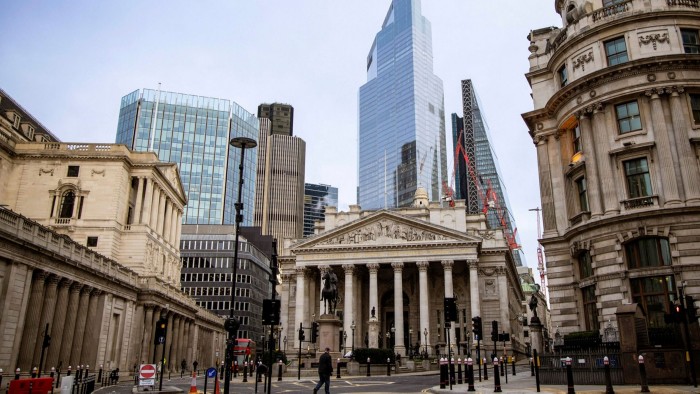Big impact for small central banks shocks global bond investors

Simply sign up to the Central banks myFT Digest -- delivered directly to your inbox.
When the Bank of England sprang a surprise last week by keeping interest rates on hold, the impact quickly spread beyond UK government bonds.
The ensuing rally in the gilt market, as traders unwound their bets on UK rate rises, also jammed yields sharply lower on eurozone bonds and US Treasuries.
The episode highlights how a clutch of smaller central banks — most notably the BoE, but also the Bank of Canada and Reserve Bank of Australia — have recently found themselves in the unusual position of dictating moves across the world’s biggest bond markets.
“We’ve seen on a number of occasions now that these central banks that are usually on the fringes of global markets have been in the driving seat,” said Rabobank rates strategist Richard McGuire. “It’s definitely the tail wagging the dog.”
Some investors attribute the unusual pattern to the perceived contrast between the Federal Reserve’s smoothly-telegraphed glide towards reducing its asset purchases or the European Central Bank’s consistent dovishness, and a series of screeching handbrake turns by smaller central banks.
The BoE has been the main protagonist, jolting UK and global bond markets when it first hinted in September that interest rates could rise this year, further stoking expectations of rapid tightening with a series of public comments by policymakers, before dashing them last week by leaving rates on hold. Last month, the RBA caused a stir of its own by letting bond yields blow past its long-held target, while the BoC made waves by abruptly ditching its bond-buying programme.
Even so, the spectacle of these relative central bank minnows calling the shots has provoked some head-scratching. As one US portfolio manager put it: “The Bank of England not hiking . . . as strange as it sounds, was a big catalyst [for the rally in Treasuries]. I say ‘strange’ with no offence to our British friends. But dude, you don’t matter that much. Why are you driving our market?”
The answer, in part, lies in a common challenge faced by central bankers around the world: how to respond to a rapid surge in inflation without overreacting in a manner that chokes off the economic recovery. Given monetary policy across the developed world has for years moved largely in lockstep, Fed- and ECB-watchers are looking to smaller — and often nimbler — central banks for clues as to how the big beasts will respond to the dilemma.
“Central banks have been in sync for so long that people can’t imagine anything else,” said Andrea Iannelli, investment director at Fidelity International. “Anyone who’s not aligned is not seen as an outlier, but as a canary in the coal mine.”
Some of this “read-across” from the BoE to the other central banks has been exacerbated by investor positioning, Iannelli argues. That is because investors wrongfooted by moves in the UK used Treasuries as a proxy for gilts as they rushed to exit lossmaking positions. “You might not be able to do that in the size you need in the gilt market so you buy Bunds, you buy Treasuries, you buy whatever you can,” he said.
The global nature of the government bond market, where investors regularly make relative assessments of the yields on offer in different economies, also means moves in one market tend to ricochet in to another.
“If interest rates are going to be higher in other countries and some of these global investors can stay home and get yield, that will matter for [the US] market,” said Tom Graff, head of fixed income at Brown Advisory.
But the role of investors’ positioning or relative value is limited by the mismatch in size of the economies and bond markets in question. With slightly less than £2tn of UK government bonds outstanding, the gilt market is little more than a tenth of the value of the Treasury market, IMF figures show. Australia and Canada’s bond markets are much smaller.
Instead, it is the clues offered by shifts in these markets about the likely next steps for bigger central banks — chiefly the Fed — that have given them outsize significance.
“The rates market has been driven by global monetary policy communication,” said Mark Cabana, head of US rates strategy at Bank of America. “The Bank of England in particular has had a big effect on the US rates market because the factors driving inflation are somewhat global in nature. And if central banks push back, that would have effects that were global in nature.”
For now, that means the twists and turns of monetary policy in the UK, Canada and Australia are likely to be subject to unusual scrutiny. Seema Shah, a London-based investment strategist for US asset manager Principal Global Investors, said she has recently fielded a flurry of calls from US colleagues.
“People suddenly wanted to find out about the BoE’s reaction function,” she said. “But there’s still this underlying disbelief. They were struggling to admit that this could have all started with the BoE.”
Comments